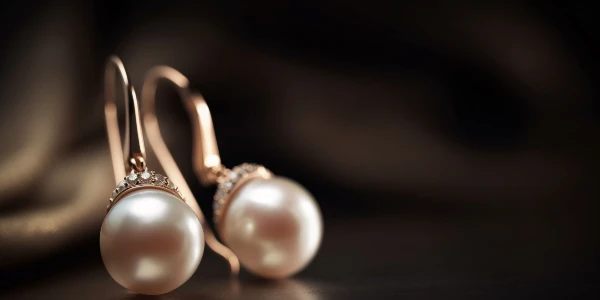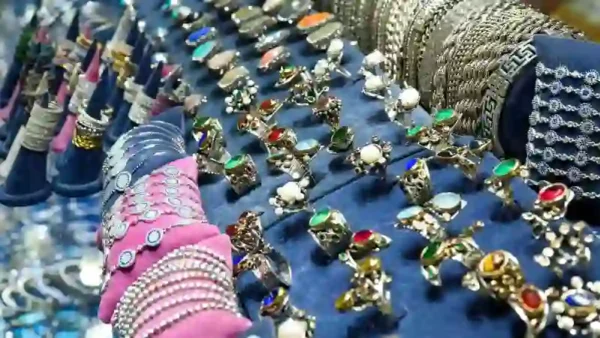Disclosure: This post may contain affiliate links, meaning we get a commission if you decide to make a purchase through our links, at no cost to you. Please read our disclosure for more info.
Last Updated on April 3, 2024 by Shopping Kim
Jewelry is a mark of beauty, a sign of wealth, and a symbol of personal style. For generations, it has adorned people, signifying moments, milestones, and memories. But with jewelry’s high demand, an influx of replicas has emerged in the market. Distinguishing between authentic and fake pieces can be a challenge, especially for those unfamiliar with the subtle signs.
For instance, while perusing the collections at a Raleigh jewelry store or one in your local area, you might wonder how you can differentiate between genuine and imitation pieces. By understanding the telltale signs and practicing due diligence, you can ensure you’re making a worthy investment.
In This Post:
Know The Hallmarks
Hallmarks are tiny imprints on precious metals, representing their purity. Start by inspecting the piece closely. If you don’t find any hallmark, it’s a red flag. However, some replicas have fake hallmarks. Cross-check the markings with standard ones online to verify their authenticity.
Examine The Stones
True gemstones possess a unique luster, which is hard to replicate by knockoffs. They’re cool to touch, and their brilliance is unmatched. Using a jeweler’s loupe, inspect the stones for any bubbles. Genuine gemstones don’t have bubbles. If you see any, you’re likely looking at glass or plastic.
Consider The Weight
Real gold and silver are notably heavy. Counterfeit pieces, on the other hand, feel lighter as they’re typically made from cheaper metals. Try comparing the weight of the suspected jewelry with a known genuine piece. The difference, even if subtle, can tell you a lot.
Scrutinize The Craftsmanship
Authentic jewelry is a testament to impeccable craftsmanship. The setting holds the stones firmly, and the finishing is impeccable. Look at how the gemstones are set. If they’re glued rather than mounted, it’s a sign of cheap workmanship. Similarly, rough edges and unpolished areas can also hint at a counterfeit.
Be Wary Of The Price
If a deal appears too advantageous, proceed with caution. Although everyone loves a bargain, extremely low prices compared to the item’s supposed value should raise suspicion. It’s always a good idea to compare prices from different sources before finalizing a purchase.
Seek Professional Advice
When in doubt, seeking expert advice is the best way to go. Consider getting an appraisal or opinion from a certified jeweler. They have the tools and expertise to provide a definitive answer on the jewelry’s authenticity.
Transitioning from one method to the other, it’s evident that determining the authenticity of a jewelry piece requires a mix of observation, knowledge, and sometimes professional input. These steps aren’t exhaustive, but they’re a solid foundation for anyone looking to invest in genuine pieces.
Conduct Magnet Test For Gold
One quick and straightforward method for checking the authenticity of gold jewelry is the magnet test. Real gold isn’t magnetic.
Hold a strong magnet to the piece. If it sticks, you’re likely dealing with a plated item or a different metal altogether. However, remember that some authentic pieces might contain magnetic metals as part of their design, so use this test in conjunction with other methods.
Check The Reaction With Skin
Some fake jewelry can cause discoloration on the skin because of the metals used in its composition. While it’s not a definitive test, if you notice staining after wearing a supposedly high-quality piece, it may be an indication of its inauthenticity. This reaction often results from metals like copper, which are commonly used in cheaper jewelry.
Do A Pearl Test
Genuine pearls are a classic addition to any jewelry collection, but they’re often replicated. To check for authenticity, rub the pearl gently against your tooth. Genuine pearls would feel sandy because of the natural layered structure, while fake ones would feel smooth.

Leverage Modern Technology
Many tools and devices today can assess the authenticity of gemstones and metals. For example, electronic gold testers can measure the metal’s electrical conductivity to determine its purity. Similarly, thermal conductivity testers can differentiate between real and fake diamonds. If you’re a regular jewelry investor, using such tools or seeking stores that use them can be beneficial.
Know Your Seller
Building a relationship with a trustworthy jeweler can save you from potential pitfalls. Research the sellers’ reputation, whether it’s an online platform, a jewelry store, or an individual. Read reviews, ask for recommendations, and don’t hesitate to ask sellers about the origins of their pieces.
Ask For Documentation
Authentic high-value pieces often come with certificates of authenticity or appraisals. If considering a significant purchase, ask for these documents. Ensure they’re from reputable organizations or labs. These certificates typically provide details about the gemstone’s cut, carat, color, and clarity.
As you delve deeper into the world of jewelry, it becomes evident that learning about authenticity is a continuous journey. As markets evolve, so do counterfeiting methodologies. Stay updated and always prioritize quality and authenticity over a too-good-to-be-true price tag.
Conclusion
Discerning fake and authentic jewelry is crucial to ensure your hard-earned money is well-spent. Equip yourself with the right knowledge, remain vigilant, and don’t shy away from seeking expert advice. Doing so lets you adorn yourself with genuine treasures that last a lifetime.

